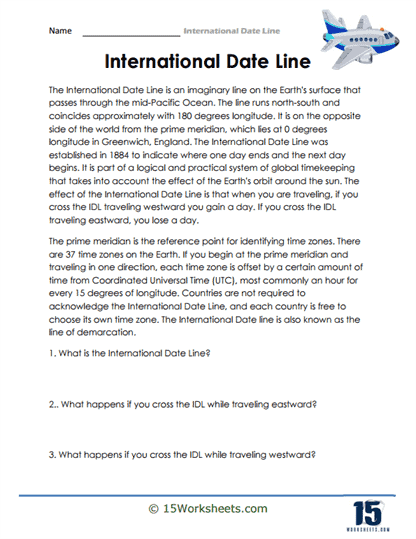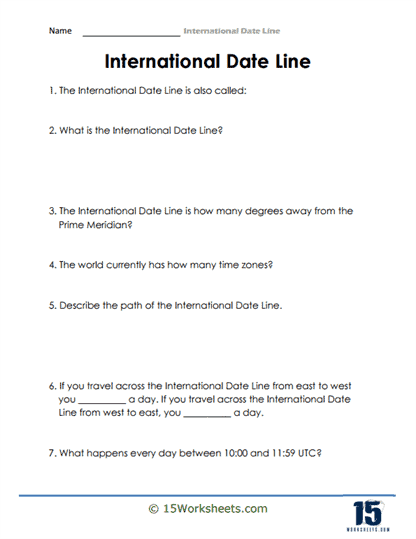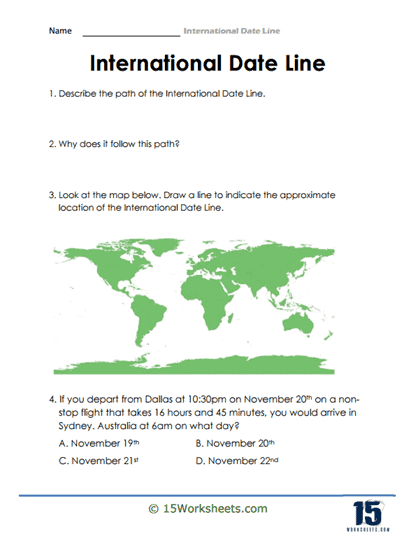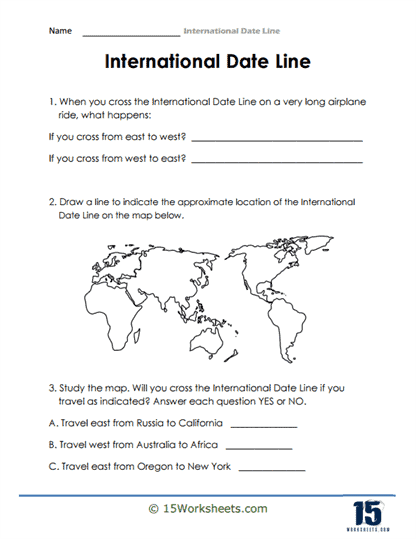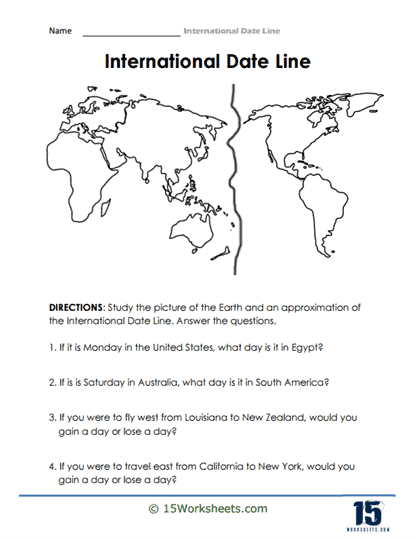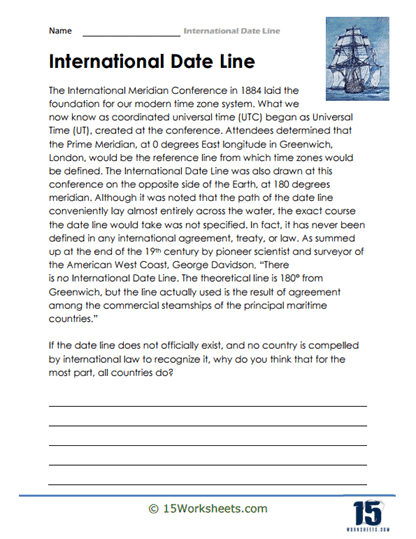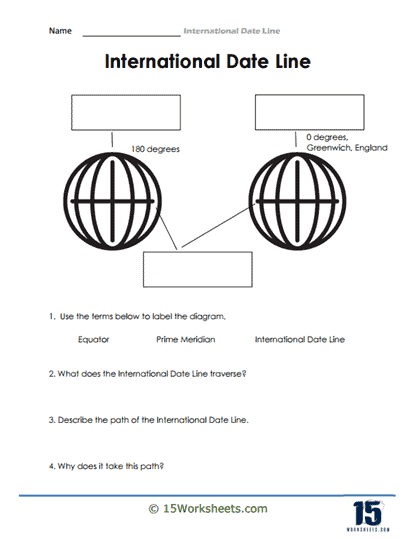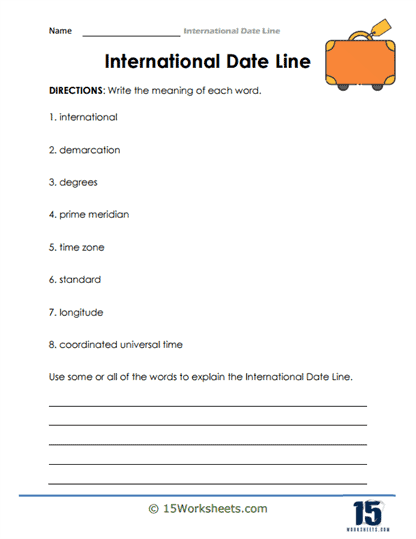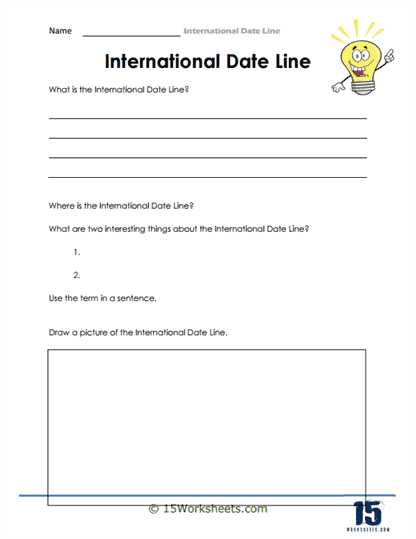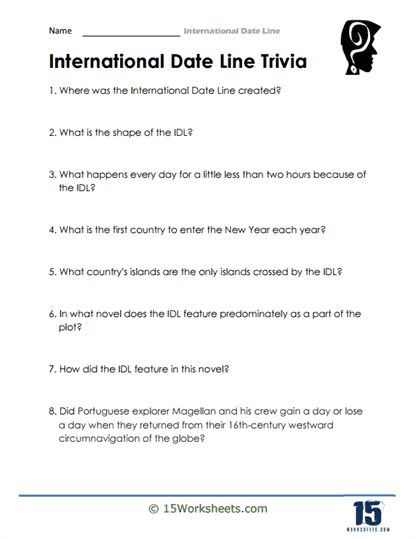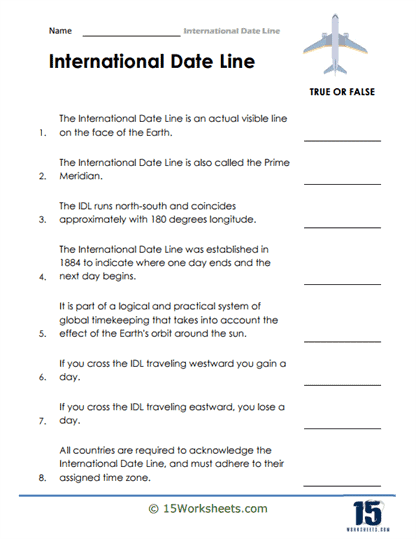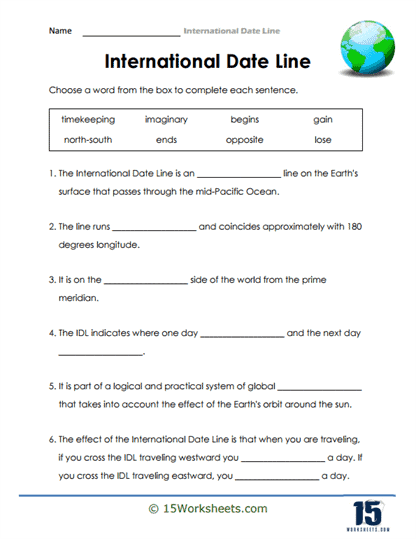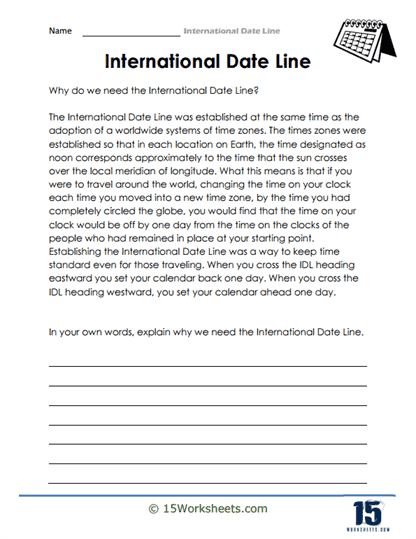International Date Line Worksheets
All About These 15 Worksheets
This comprehensive series of 15 worksheets is designed to introduce students to the concept and significance of the International Date Line, a line of longitude that marks the boundary between calendar dates as one travels across it. Through engaging activities and thought-provoking exercises, students will gain a deeper understanding of the International Date Line, its historical context, and its impact on timekeeping and global communication. By completing these worksheets, students will:
- Explore the concept of time zones, the history of the International Date Line, and its purpose in maintaining a consistent and orderly system of timekeeping across the globe;
- Practice locating the line on world maps and explore the various adjustments made to accommodate geographical and political considerations;
- Investigate the impact of the International Date Line on global communication and coordination;
- And hone their vocabulary skills by defining related terminologies such as time zone, prime meridian, demarcation, and more.
Embarking on this series of worksheets will transport students to the fascinating world of the International Date Line, fostering a deep understanding of its purpose, significance, and impact on global communication and timekeeping. Through a range of exercises, students will develop critical thinking skills, cultural awareness, and a greater appreciation for the complexities of our interconnected world. Overall, this series aims to inspire students to reflect on the concept of time, explore the diverse cultural practices associated with the International Date Line, and consider the implications of time zones and international coordination in an increasingly globalized society.
What is the International Date Line?
The International Date Line (IDL) is an imaginary line on the Earth’s surface that roughly follows the 180th meridian (180° longitude), located exactly halfway around the planet from the Prime Meridian (0° longitude). The IDL serves as a demarcation point where the date changes by one day as you cross it. It is not a straight line, as it deviates to accommodate political boundaries and territories.
The main purpose of the International Date Line is to facilitate the uniformity of time and date across the globe, as it separates two consecutive calendar days. When you cross the IDL from west to east, you subtract one day, and when you cross it from east to west, you add one day. This system ensures that all time zones around the world are properly synchronized with each other, taking into account the Earth’s rotation.
The concept of the International Date Line was first proposed during the International Meridian Conference held in Washington, D.C. in 1884. The conference aimed to establish a standardized global time system and designated the Prime Meridian as the reference point for calculating longitude and determining time zones. The IDL was then established as the point where the date changes to maintain consistency in the global time system.
It is important to note that the International Date Line is not enforced by international law, but rather by convention and practical necessity. Countries and territories located near the IDL may choose to align their time zones based on their own requirements, sometimes resulting in deviations from the 180° meridian.

